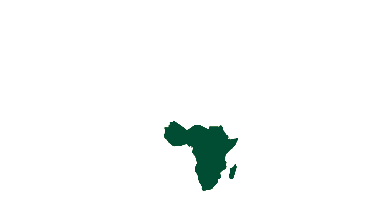Case study
2024 • Stockholm Environment Institute (SEI) Urine-Diverting Dry Toilets (UDDTs) in rural Burkina Faso
In Burkina Faso, where sanitation access and soil fertility are critical challenges, productive sanitation initiatives have introduced technologies like urine-diverting dry toilets (UDDTs) to safely recover and reuse nutrients from human excreta. Over the past 15 years, more than 13,500 households have participated in 30 projects, improving rural sanitation while enabling the reuse of excreta as fertilizers. These efforts have demonstrated how ecological sanitation can simultaneously address public health, environmental, and agricultural challenges in resource-scarce settings.
Recovered Materials & Products
Nutrients
Fertilizer
Compost
Waste Streams
Faecal sludge
Urine
Confirmed countries
United States of America


Background and Context
Location: Rural areas of Burkina Faso, where 74% of the population lives, and 85% are engaged in agriculture.
Resource Stream: Human excreta, including urine and feces, recovered and reused as fertilizers.
Challenges: Pit latrines are the primary sanitation method in rural areas but are associated with significant issues such as groundwater contamination from nitrate leaching, poor resource recovery, and vulnerability to flooding during heavy rains. Nutrients in human excreta are often wasted due to leaching and vaporization, despite their potential to replace costly commercial fertilizers. For many subsistence farmers, the $40–80 annual cost of chemical fertilizers is prohibitive. High rates of open defecation (46% in 2022) and the limited adoption of sustainable sanitation solutions exacerbate public health risks and environmental degradation.
Technologies/Methods Used:
- Urine-Diverting Dry Toilets (UDDTs): Double-vault systems designed for safe separation, collection, and reuse of urine and feces.
- Composting: Processing sanitized feces to create nutrient-rich compost for soil application.
- Farmer Field Schools: Training farmers in the safe and effective use of excreta-derived fertilizers through participatory education programs.
- Participatory Implementation: Farmers are engaged through agricultural organizations and required to complete training on reuse practices before receiving support for toilet construction.
- Integrated Solutions: Emphasis on combining sanitation improvements with agricultural benefits to strengthen adoption and long-term sustainability.
Implementation Steps
- Pilot Phase: Initial projects focused on testing UDDT designs and engaging rural communities.
- Expansion: Over 15 years, 30 projects involving more than 13,500 households were implemented across Burkina Faso.
- Capacity Building: Farmer Field Schools provided hands-on training on using sanitized excreta as fertilizers, enhancing knowledge and motivation.
- Follow-Up: Post-project evaluations ensured continued use and effectiveness of installed UDDTs, with active NGOs maintaining support systems.
Outcomes and Impacts
Productive sanitation initiatives in Burkina Faso have achieved significant results. In three revisited projects, 70–89% of UDDTs remained in use 2–6 years after implementation. The sustained use of these toilets was strongest in projects emphasizing the reuse of nutrients and providing thorough training. Many households cited the ability to reuse urine and feces as fertilizers as their primary motivation for adopting UDDTs.
From a broader perspective, the nutrient content of human excreta in Burkina Faso exceeds the annual application of chemical fertilizers. For a typical rural family, the nitrogen, phosphorus, and potassium in excreta equates to 80 kg of commercial fertilizers, valued at $40–80 per household annually. This demonstrates the economic and agricultural potential of scaling productive sanitation systems. Beyond individual benefits, the initiative also contributes to improved groundwater quality by reducing nitrate pollution from pit latrines.
Lessons Learned
Key lessons from these initiatives include the importance of linking sanitation improvements with tangible agricultural benefits to drive adoption. Farmer Field Schools proved critical in building capacity and motivation among households, ensuring the sustained use of UDDTs. Active involvement of NGOs and partnerships with agricultural organizations enhanced the effectiveness and reach of the projects.
The approach also highlighted the need for consistent follow-up and monitoring to ensure long-term success. Projects that emphasized reuse and provided hands-on training achieved higher rates of sustained use. Furthermore, the scalability of this model depends on integrating sanitation improvements into broader agricultural and food security strategies.
Learn more
The text of the case study is available at the link below:
https://files.grida.no/sdm_downloads/1146-case-study-4/
This case study is extracted from the publication linked below: "Wastewater - Turning Problem to Solution", UNEP (2023)
https://www.unep.org/resources/report/wastewater-turning-problem-solution#:~:text=This%20new%20report%2C%20%E2%80%9CWastewater%20-,blocks%2C%20described%20in%20the%20publication.
Original authors' report:
https://www.sei.org/publications/return-to-learn-ecosan-bf/
Technologies
Composting
Themes
Monitoring, Evaluation and Learning
Capacity building
Technologies